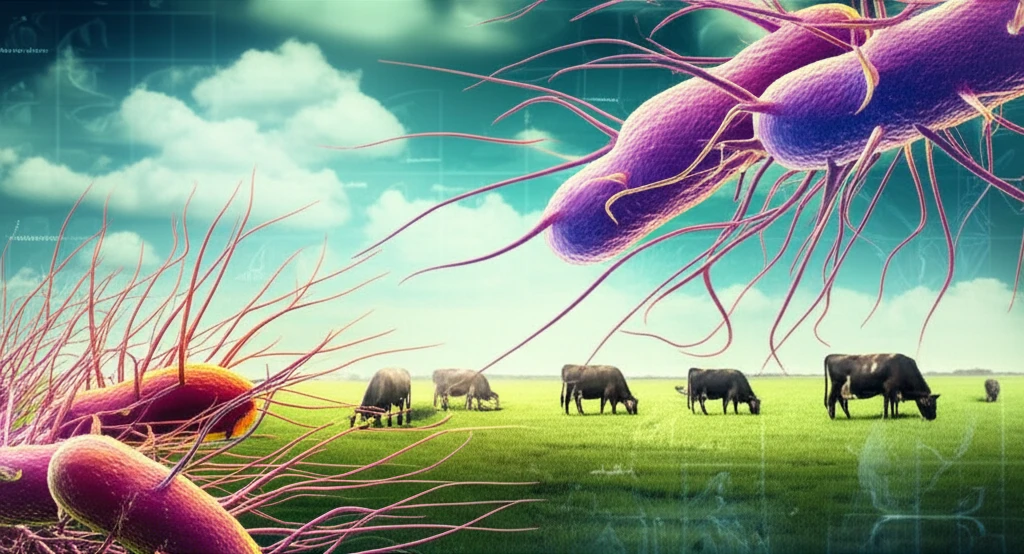
Decoding E. coli O157: What Cattle Can Teach Us About Food Safety
"A deep dive into how long polar fimbriae in E. coli O157 strains could be a key to understanding and preventing foodborne illnesses."
Escherichia coli, commonly known as E. coli, is a diverse group of bacteria, with some strains being harmless residents of our intestines while others can cause serious illness. Among the pathogenic strains, E. coli O157 stands out as a significant cause of foodborne diseases worldwide. Understanding the genetic factors that contribute to the virulence of E. coli O157 is crucial for developing effective strategies to prevent outbreaks and protect public health.
Recent research has focused on long polar fimbriae (Lpf), which are adhesive structures found on the surface of E. coli cells. These Lpf are increasingly recognized as important genetic markers for identifying pathogenic strains. A study published in Acta Veterinaria Hungarica investigated the prevalence and diversity of Lpf operons in E. coli O157 strains isolated from both cattle and humans, shedding light on the potential role of these structures in bacterial adhesion and pathogenesis.
This article delves into the findings of this study, explaining how the analysis of Lpf allelic types can provide valuable insights into the genetic characteristics of E. coli O157 strains. By exploring the connection between cattle, human infections, and the genetic makeup of these bacteria, we aim to enhance understanding of food safety and public health strategies.
Unlocking the Secrets of Long Polar Fimbriae

The research screened a collection of 97 E. coli O157 strains, isolated from healthy cattle and human patients across different countries, for the presence and genotype diversity of Lpf operons. Using PCR techniques, individual structural genes of Lpf were scanned, and allelic variants were identified based on a recently developed typing scheme. The study revealed that 95 of the strains carried at least one complete Lpf operon.
- EHEC and EPEC Strains: Consistently carry two Lpf operons (allele 3 of lpfA1 and allele 2 of lpfA2).
- Atypical Bovine Strains: Often carry only one complete Lpf operon (allele 1 of lpfA2).
- Phylogenetic Groups: Atypical strains belong to main phylogenetic groups A and B1, while EHEC and EPEC strains are from group D.
Implications for Food Safety and Public Health
The identification of specific Lpf allelic combinations in different E. coli O157 strains has significant implications for food safety and public health. By understanding the genetic markers associated with highly virulent strains, we can develop more targeted and effective strategies for detecting and preventing outbreaks.
Furthermore, the discovery of distinct genetic lineages in atypical bovine E. coli O157 strains raises concerns about their potential to cause zoonotic infections. Additional research is needed to determine the pathogenic potential of these strains and the role of Lpf in the process of infection.
Ultimately, unraveling the genetic complexities of E. coli O157 and its interactions with cattle can pave the way for innovative approaches to minimize the risk of foodborne illnesses and protect public health. This study underscores the importance of continued research in this area to safeguard our food supply and promote healthier communities.
